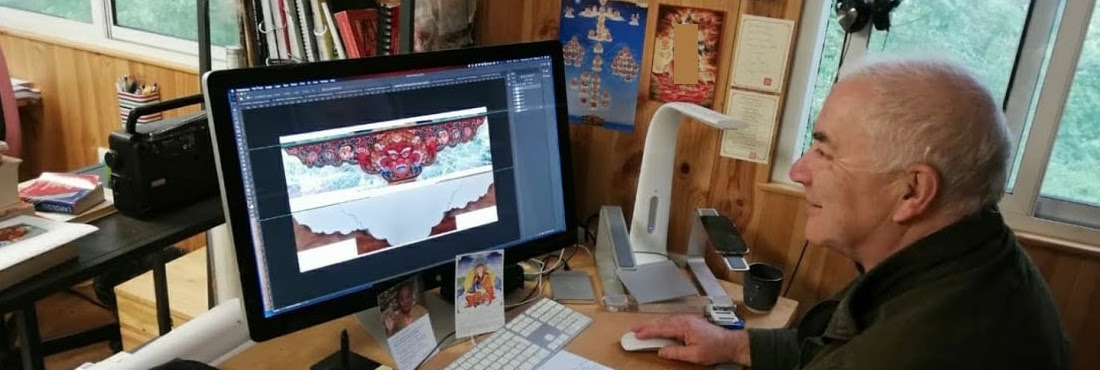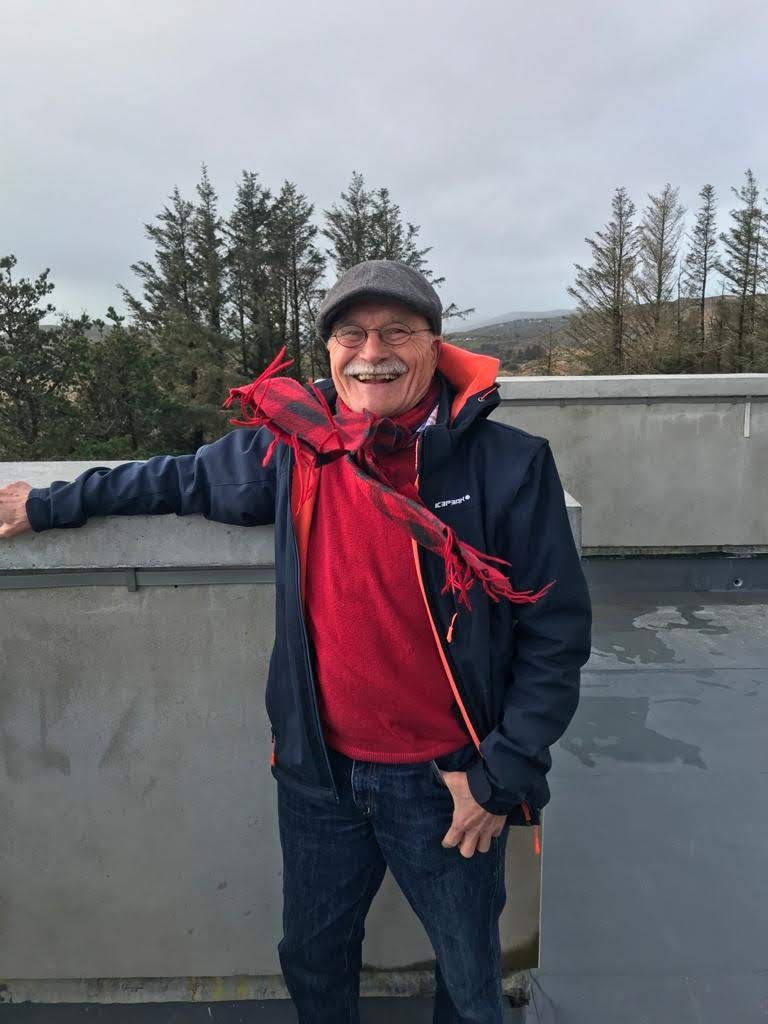News
The Elements are Coming Together

We’re immensely grateful for all of the love and support that Dzogchen Beara has received in what has been a difficult year for us all.
Meanwhile, work on the temple has continued throughout the pandemic. More than that, amazing progress has been achieved. It’s truly extraordinary to consider that, with the help of supporters like you, we remain hopeful of completing construction by the end of 2021.
On site, by Christmas we will complete the sealing of surfaces and cleaning the interior; installing door frames, downpipes, and importantly electrical wiring for temporary heating and ventilation, to protect the structure in winter.
Looking ahead, depending on donations, all external buildings can be finished by April, as well as ground-works, boundary walls and porches. We hope to complete the copper roofs (see below) and to lay paving by June, followed by installation of the acoustic ceiling, final electrics and fans, with roof ornaments fixed in place at the same time. Then carpentry and sanitary ware will bring the building to completion. Allowing time for painting and landscaping we have settled on autumn 2022, as the best time to invite His Holiness Sakya Trizin to inaugurate the temple in a magnificent state of full accomplishment.

After a generous response to our appeal at the beginning of March, donations slowed down as COVID-19 spread. When travel restrictions impacted we decided to suspend fundraising for the temple: The priority was asking everyone to support the finances of Dzogchen Beara and Lerab Ling. (NB The temple fund is restricted and cannot be used for any purpose other than construction, so your donations to the temple are protected.)
Now we are asking for your help again. We need another €143,000 to keep going into spring 2021. To finish everything, we need €700,000 total.
 Please continue to support the temple by giving what you can, when you can. We need your help and every donation makes a difference.
Please continue to support the temple by giving what you can, when you can. We need your help and every donation makes a difference.
Pledges of €1,000
If you haven’t already; can you help with a pledge of €1,000? That’s just €3 a day, €21 a week…
Something to think about: 700 pledges would be enough to finish the temple.
Make a one-off donation or set up a standing order today (for €84 x 12 = €1,000).
Building the shrine

When construction halted for seven weeks during the first lockdown (March-May), we used the time to create a model of the shrine – pictured in the header of this email – with images of the three main statues (Buddha, Guru Rinpoche and Tara). This to-scale mock-up will assist design of the real shrine. Nothing is wasted. The decorations were carved from off-cuts of insulation. The “shrine” is made from wooden crates used to transport materials from India. The Kangyur and Tengyur (the complete teachings of the Buddha and commentaries, to be placed in bookcases flanking the shrine) are also to scale, with each pecha (loose-leaf Tibetan woodblock-printed text) represented by a photocopy.
In the photos immediately above, Temple Project Manager Leon Rossiter and his assistant Maella Wooton are using a mixture of materials (torn-up bed-sheets!) and computer visualisations to plan the duk, a traditional brocade canopy that will hang above the Buddha statue.

We often speak about the temple as representing a confluence of the elements, whose power is so clear at Dzogchen Beara. The wind and rolling ocean, the sun flashing on waves, the dramatic landscape, the spacious expanse of unbroken views; air, water, fire, earth and space coming together in the constituent parts of the temple. On October 1st we passed a milestone with the connection of electricity, which brings the fires of light and heat. While its spiritual energy is tangible to anybody who even sees the temple, the arrival of power has brought a new level of life to the building.
To test how paint survives over the harsh Beara winter we’ve painted the Dharmakaya, the sacred reliquary at the top of the temple. This is the part of the temple that receives the most salt spray. The team applied two coats of anti-fungal solution and three coats of paint; the kind used on lighthouses around the Irish coast. Now we’ll wait to see if this paint will keep its lustre through the season.
Dzogchen Beara and Lerab Ling working together
Design of the sacred decoration of the Tsuklhakhang (the main shrine room) has begun, with teams in Ireland and France working closely together, with great attention given to every detail, to ensure authenticity and beauty.
The success of this cooperation can be seen in the design process for the Kirtimukha, representation

While Leon and Maella made measurements of the columns and beams at Dzogchen Beara, in France Colin Hamilton used original silicon moulds from the decoration of the Lerab Ling temple, to create Kirtimukha forms in plaster.

Graphics genius Pete Fry then scaled down a photo of the decorations on the columns at Lerab Ling to equate to the correct dimensions for Dzogchen Beara, based on information from Leon.

Nelly Duvernay (a wood carver who did much of the sacred decoration for the Lerab Ling temple, pictured above left with Lama Yonten in her workshop) studied the plaster form and the photo, adjusted measurements, and then carved a Kirtimukha to the appropriate size for Dzogchen Beara.

Using Nelly’s wood carvings, Colin made a new silicon mould which will be used to make the Kirtimukha for the four central columns of the Dzogchen Beara Tsuklhakhang. A similar process will be employed to make norbu jewels to adorn the four outer columns, and other decorative details.
Copper Roofs

It’s hard to believe that it’s almost a year since the passing of our dear friend and mentor, Giles Oliver, the temple architect, seen above in conference with the team discussing the copper roofs.
The roofs with their ornaments will be the real crowning glory of the building. As we enter the final design phases, we’re sad Giles is not physically present to share our happy anticipation, but we still feel his hands guiding us, every day, on every step of the way.
The shining splendour of these roofs on the clifftop will surely be visible from far out on the ocean but this location also brings a special challenge. Untreated copper would lose its colour in spray from the sea winds, which would also quickly strip off any protective lamination. To find the best alternative, we have left various alloys on frames for months to see how they react to salt air. Giles favoured Nordic Royal Copper, a copper alloy containing zinc and aluminium that give it a distinctive golden colour.
20 months ago we put out some pieces of Nordic Royal Copper, to see how the marine environment would affect them. Recently when we washed them down with a citric acid solution we were delighted to find that any tarnish was removed and the metal soon shone like new. We’re waiting to see how the other samples fare and our research will continue until we are sure that the temple will shine like the ‘Beacon of Wisdom and Compassion’ Giles imagined.
What the temple means to me: Martin Hein
 “It’s so amazing to feel the power from this temple”.
“It’s so amazing to feel the power from this temple”.
Martin Hein has been coming to Dzogchen Beara for 25 years. He was one of the first group of students to enter into tradiitonal three roots retreat here and he comes back often to join in spiritual practice with our resident community.
Last spring we asked Martin to share his personal thoughts about the temple, in a short video which you can watch by clicking here.
Martin is one of the lucky few who have had the opportunity to chant in the Tsuklhakhang and here he speaks about the joy of practising in the temple. In the video you can also hear some chanting in the Tsuklhakhang, displaying the resonant acoustics Martin praises.
Speaking in the Mediation Garden below the temple, Martin reminds us of the practicalities; “We need some money to finish the last steps, so everyone who can help is very welcome!”